Research Articles
Reviews
Issue Editorial Board

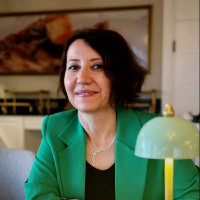

Graduated from Niğde University Art Education Undergraduate Program in 2009. Completed her Master's Degree in 2014 at Niğde University, Institute of Educational Sciences, Department of Art Education. In 2014, she worked as a Research Assistant at Niğde University, Department of Art Education. In 2018, she studied at Aalto University in Helsinki for one semester as part of Erasmus Education Mobility. She completed her doctoral education and research assistantship, which she started in 2014 at Anadolu University, Institute of Educational Sciences, Department of Art Education in Eskişehir, in 2021. She opened a total of 4 personal exhibitions, 3 physical exhibitions in Finland, Romania, Eskişehir and 1 online exhibition at Tam Sanat Online Gallery. Özeskici, who participated in national and international group exhibitions, has 1 award. He has been working as an assistant professor at Niğde Ömer Halisdemir University, Faculty of Fine Arts, Department of Graphic Arts since 2021.
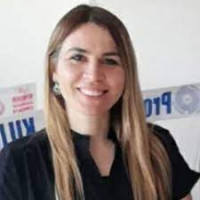

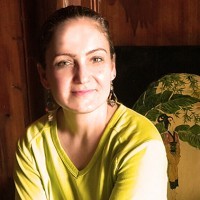
1978 yılında Ankara’da doğdu. 2001 yılında Gazi Üniversitesi Mesleki Eğitim Fakültesi (GÜMEF) Uygulamalı Sanatlar Eğitimi Bölümü, Seramik Öğretmenliği programından mezun oldu. 2006 yılında Hacettepe Üniversitesi Sosyal Bilimler Enstitüsü Sanatta Yüksek Lisans programını ve Gazi Üniversitesi Eğitim Bilimleri Enstitüsünde Grafik Eğitimi alanında doktora eğitimini 2013 yılında tamamladı. 2006-2010 yılları arasında GÜMEF Araştırma Görevlisi, 2010-2013 yıllarında Nevşehir Hacı Bektaş Veli Üniversitesi, Avanos Meslek Yüksekokulu Seramik, Cam ve Çinicilik programında öğretim görevlisi olarak çalıştı. 2013 yılında aynı kurumda Güzel Sanatlar Fakültesi Seramik ve Cam Bölümünde öğretim üyesi olarak görevine devam etmektedir. Macaristan (Balassi Institute) ve Çin Halk Cumhuriyeti (Jingdezhen Ceramic Institute) ülkelerinden yabancı hükümetler bursları kazanarak porselen üzerine çalışmalar yapmıştır. Her iki ülkede de kişisel seramik sergisi açmıştır. Üçüncü kişisel seramik sergisini 2018 yılında yapmış olup; Cam Sanatı üzerine açtığı son sergisi ise 2023 yılında Kapadokya’da gerçekleşmiştir. Ulusal, uluslararası sempozyum ve kongrelerde düzenlenen sergilerde yapıtları sergilenmiş, bildirileri ve makaleleri yayınlanmıştır. Çok sayıda karma sergiye katılmıştır. Evli, 1 çocuk annesidir.






LİSE: İzmir Işılay Saygın Anadolu Güzel Sanatlar Lisesi,
LİSANS: Gazi Üniversitesi Eğitim Fakültesi Güzel Sanatlar Eğitimi Bölümü Müzik Eğitimi Anabilim Dalı,
YÜKSEK LİSANS - DOKTORA: Gazi Üniversitesi Eğitim Bilimleri Enstitüsü Güzel Sanatlar Eğitimi Anabilim Dalı Müzik Öğretmenliği Bilim Dalı

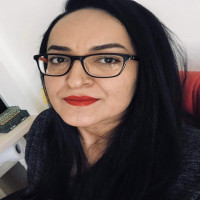





 Web
Web
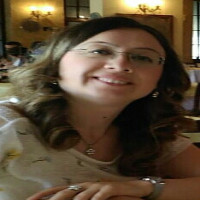
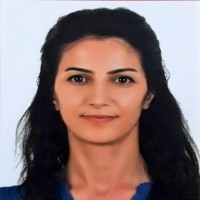
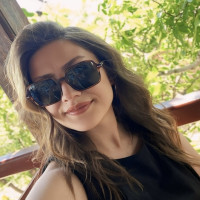


After graduating from Ankara Anatolian High School, I completed my undergraduate education in Landscape Architecture, my master's degrees in Landscape Planning and Environmental Management, and my PhD in Environmental Economics. I worked at Ankara University, University of Massachusetts (World Bank Scholarship), TUBITAK, American Geomatics Group, Geotech Company and finally at Anadolu University, Department of Architecture and Institute of Earth and Space Sciences. In addition to the Directorate of the Institute of Earth and Space Sciences, I served as the Head of the Departments of Architecture, Basic Design Education and Fashion Design, and I was the Head of Remote Sensing and GIS. I served as Vice Rector and Dean of the Faculty of Architecture and Design at Eskişehir Technical University. I am currently serving as the Chairman of the Board of Directors of the Design and Planning Accreditation Association.
I have worked in many national-international projects, contributed to the establishment of various academic programmes and training programmes, and collaborated with many national and international organisations for this purpose, in order to use and disseminate technologies such as remote sensing, terrestrial photogrammetry, aerial photogrammetry, etc., especially geographic information systems, in order to investigate human settlements that are not threatening the environment and where the environment is not threatened by disasters.
In summary, I am a world and homeland lover who is trying to contribute to the upbringing of generations who respect the earth - the world - and to the projects that will illuminate the path of these generations. I have lit many lights so far, and I am trying to do everything I can to see them illuminate our country first and then the world. If you think you can contribute to the illumination of our world by these lights, you can contact me.
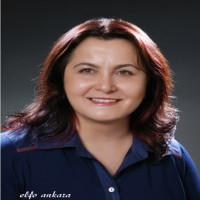
https://akademik.yok.gov.tr/AkademikArama/view/viewAuthor.jsp

Aim & Scope
Journal of Art and Design Researches (STAR) aims to share articles that aim to make a qualified contribution to the literature in the fields of "Architecture and Design Field: Visual Communication Design: Photography, Graphic Design, Computer Aided Design in Visual Communication, Visual Design, Semiology, Illustration Architecture: Interior Architectural Design, Architectural Heritage and Conservation, Architectural Design, Sustainable Architectural Design: Industrial Product Design, Textile and Fashion Design- Art and Literature Field: Traditional Turkish Arts: Bookbinding Art, Tile Art, Old Fabric Patterns, Carpet-Rug and Weaving, Miniature, Traditional Turkish Arts (Other), Visual Arts: Handicrafts, Fine Arts, Visual Arts (Other), Music: Music Perception, Music Education, Music Performance, Music Theories, Music (Other), Plastic Arts: Sculpture, Painting, Ceramic Design, Art History, Theory and Criticism: Cultural and Natural Heritage, History of Architecture, Aesthetics in Architecture, History of Painting and History of Art", quickly and free of charge, with the world of science and art in electronic environment.
Journal of Art and Design Researches (STAR) accepts publications in both Turkish and English in the fields of "Plastic Arts, Graphic Arts, Contemporary Arts, Photography and Video, Media Design, Fashion Design, Textile Design, Art History, Art Education, Art and Design Theories, Traditional Turkish Arts, Music, Turkish Music, Cinema, Culture and Heritage Preservation, Architecture and Building Design, as well as interdisciplinary art and design research".
Author Guidelines
Article writing rules are included in the article template of our journal.
As of January 19, 2023, the Journal of Art and Design Researches (STAR) Article Template has been updated. The relevant template must be used when submitting articles for June 2023 and later issues. Article writing rules are included in the article template below.
Download Journal of Art and Design Researches Article Template and Authoring Rules file.
Journal of Art and Design Researches Copyright Transfer Form must be signed by all authors and uploaded to the system.
The authors must upload the Similarity Report to the system.
Ethical Principles and Publication Policy
Journal of Art and Design Researches (STAR), the publication organ of Niğde Ömer Halisdemir University Faculty of Fine Arts, adopts a publication policy based on free, scientific, impartial and rapid evaluation. All publications in the journal archive are open to access. The Journal of Art and Design Researches (STAR) adopts national and international ethical rules and principles regarding “Publication Ethics”, “Research Ethics” and “Obtaining Legal/Special Permission Document”. All parties involved in the publication process are obliged to comply with the following ethical rules detailed within the scope of the guidelines published by the Committee on Publication Ethics (COPE).
• Articles sent to the Journal of Art and Design Researches are expected to be original, have not been published anywhere before and contribute to science/art.
• According to the double-blind refereeing system applied in the Journal of Art and Design Researches, the study is submitted to the evaluation of two referees. If there is one positive and one negative opinion from the referees, the opinion of the third referee is sought. The final decision on publication belongs to the journal's editorial board.
• Editors, authors and referees who participate in the evaluation and publication process of the studies submitted to the Journal of Art and Design Researches accept the rules specified below under separate headings for each stakeholder.
ETHICAL RESPONSIBILITIES OF AUTHORS
• Authors should not have submitted their work to another journal for publication at the same time.
• Authors should have obtained the necessary ethics committee permissions for their research.
• When submitting an article, all authors approve the STAR Journal Copyright Transfer Form. No royalty fee is paid to authors in any way.
• Authors are required to upload the Similarity Report to the system. Articles with a similarity rate of over 15% in reports received from IThenticate or Turnitin programs will not be evaluated.
• Authors must submit their articles in accordance with the STAR Journal Article Template and writing rules.
• If the studies in question have been supported by any institution or organization, this institution or organization must be stated in the article. Any personal and financial relationships that may be related to their work must be stated.
• Researchers must not plagiarize, fabricate or distort the data, findings and evaluations in the study from elsewhere. No information, findings or ideas belonging to someone else may be used without citing the source.
• Authors of the article must be stated completely and accurately. All authors named in the article must have directly contributed to the study. The order of authors should be determined according to their level of contribution to the research.
• Works that have been removed from unpublished reports, theses or presentations should be clearly stated. Authors should avoid republishing a previously published study, some or all of which have been published, as a separate publication without citing it.
• Authors should take into consideration the opinions and suggestions of the referees and the editorial board during the evaluation process. They accept that the final decision on the publication of the study rests with the editorial board of the journal.
• Authors should contact the Journal of Art and Design Researches to inform, correct or retract any errors or mistakes they notice in their published articles.
ETHICAL RESPONSIBILITIES OF EDITORS AND FIELD EDITORS
• Editors of the Journal of Art and Design Researches are responsible for publishing articles that they are certain of their scientific quality, ensuring that the blind peer review process and ethical principles are implemented.
• Editors must keep information about articles sent to the Journal of Art and Design Researches confidential. They must ensure that articles are reviewed by appropriately qualified referees and that evaluations are conducted impartially and independently.
• When making decisions about the publication of articles, editors base their decisions on the originality of the articles, their contribution to science/art, the validity of the research method used and the results obtained, the clarity of expression, and their suitability for the purpose and scope of the journal.
• Editors are responsible for communicating the referees' evaluations to the author without making any changes, as long as they do not contain insulting or derogatory statements.
• Editors must review the authors' objections to the referees' negative opinions, determine whether the objection in question is based on substantiated grounds, and if deemed necessary, seek a different referee opinion.
• Editors should ensure that articles from authors affiliated with the Journal of Art and Design Researches are evaluated impartially and inform readers about this.
ETHICAL RESPONSIBILITIES OF REFEREES
• Referees must accept to evaluate only articles related to their fields of expertise and complete their evaluations within the time limit.
• Referees must evaluate articles in terms of their scientific qualities, in an impartial manner and in accordance with academic rules, and keep all information about the article confidential.
• Referees must also take into account the rules of plagiarism based on the citation-source relationship of the article.
• Referees accept that the final decision on the publication of the article is under the authority of the journal's editorial board.
OBTAINING LEGAL/SPECIAL PERMISSION CERTIFICATE
In studies requiring ethics committee approval, information regarding the ethics committee approval obtained (the name of the institution granting the permission, the date and the issue number it was obtained with) must be clearly stated in the method section and also on the first page of the article. Studies requiring ethics committee approval are as follows:
• Any research conducted with qualitative or quantitative approaches that require data collection from participants using survey, interview, focus group study, observation, experiment, interview techniques,
• Research using humans and animals (including material/data) for experimental or other scientific purposes,
• Clinical studies conducted on humans,
• Research conducted on animals,
• Retrospective studies in accordance with the Personal Data Protection Law.
In addition, permission must be obtained from the owners of scales, surveys or photographs belonging to others in articles and must be stated in the article.
Price Policy
Journal of Art and Design Researches (STAR) serves the public interest completely and no fee is charged from the users.

